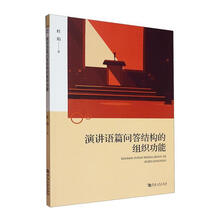柏林市的地标德国国会大厦
德国国会大厦,官方名称为“帝国议会大厦大会场”,位于柏林市中心,建于1884年。由德国建筑师保罗·瓦洛特设计,长137米,宽97米,采用古典主义风格,体现了古典式、哥特式、文艺复兴式和巴洛克式的多种建筑风格,是德国统一的象征。现在,国会大厦不仅是联邦议会的所在地,其屋顶的穹形圆顶也是最受欢迎的游览圣地。
The Raichstaa buildina is a historical edifice in Berlin, Germany, constructed to house theReichstag, parliament of the German Empire. It was opened in 1894 and housed theReichstag until 1933, when it was severely damaged in a fire. After World War lI, the buildingfell into disuse, since the parliament of the German Democratic Republic met in the Palace ofthe Republic in East Berlin and the parliament of the Federal Republic of Germany met in theBundeshaus in Bonn. The ruined building was made safe against the elements and partially refurbished in the 1960s, but no attempt at full restoration was made until after German reunification on October3, 1990, when it underwent a reconstruction led by internationally renowned architect NormanFoster. After its completion in 1999, it once again became the meeting place of the German parliament: the modern Bundestag. The term Reichstag, when used to connote a parliament, dates back to the Holy RomanEmpire. The body meeting in this building - the Reichstag of the German Empire, then the Weimar Republic and finally Nazi Germany - ceased to act as a true parliamentary assembly in the years of the Nazi regime (1933~1945). In today's usage, the German word Reichstag refers mainly to the building, while Bundestag refers to the institution,
The offlcial German reunification ceremony on October 3, 1990, was held at the Reichstag building, including Chancellor Helmut Kohl, President Richard von Weizsacker, former Chancellor Willy Brandt and many others. The event included huge firework displays. One day later, the parliament of the united Germany would assemble in an act of symbolism in the Reichstag building.
However, at that time, the role of Berlin had not yet been decided upon. Only after a fierce debate, considered by many as one of the most memorable sessions of parliament, did the Bundestag conclude, on June 20, 1991, with quite a slim majority in favour of both government and pariiament returning to Berlin from Bonn.
1n 1992, Norman Foster won yet another architectural contest for the reconstruction of thebuilding. His winning concept looked very different from what was later executed. Notably, theoriginal design did not include a cupola.
Before reconstruction began, the Reichstag was wrapped by the Bulgarian-American artistChristo and his wife Jeanne-Claude in 1995, attracting millions of visitors. The project wasfinanced by the artists through the sale of preparatory drawings and collages, as well as earlyworks of the 1950s and 1960s.
During the reconstruction, the building was first almost completely gutted, taking outeverything except the outer walls, including all changes made by Baumgarten inthe 1960s. Thereconstruction was completed in 1999, with the Bundestag convening there officially for the firsttime on April 19 0f that year. The Reichstag is now the second most visited attraction in Berlin,not least because of the huge glass dome that was erected on the roof as a gesture to theoriginal 1894 cupola, gMng an impressive view over the city, especially at night.
德国国会大厦以天然石、钢材、玻璃为基本建筑材料而筑成。各会议大厅,都以淡雅素净为基调,雕饰着各种名冠世界的艺术品。最惹人注目的是,在国会大厦中间,有一个硕大无朋的圆顶,它全部由透明的玻璃材料构成,意味着议会所有的议员及其工作,都是坦诚和透明的。玻璃圆顶下面的大厅当中有一个喇叭形的柱子直达屋顶,柱面由镜子拼接起来,反射着天光和人影,为整个大厅营造出一种超脱凡尘的气氛。在圆顶环形道的最高处,人们则可以尽情饱览柏林的全方位景观。
……
展开










